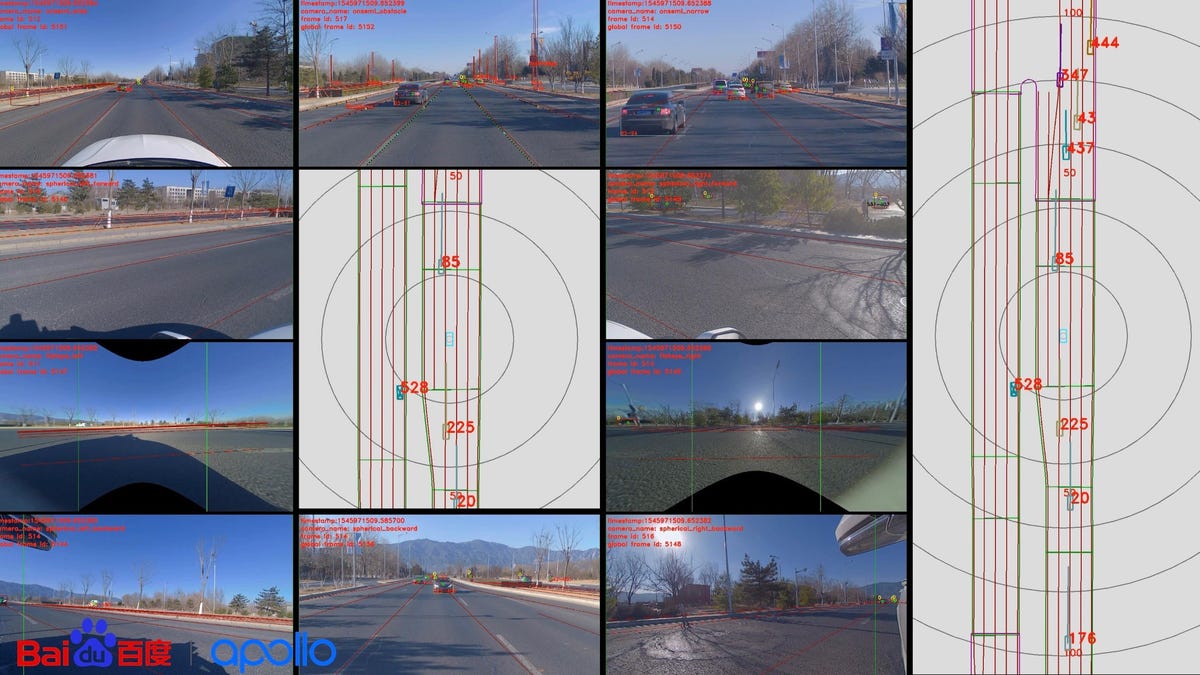Baidu unveils its camera-based Apollo Lite self-driving suite
The company claims that Lite is capable of Level 4 autonomy as defined by the Society of Automotive Engineers.
Chinese ultra-globo-megacorp Baidu has spent the last few years developing its Apollo open-source self-driving car platform, which, like many other systems currently being developed, relies on a combination of cameras, ultrasonic, radar and lidar sensors all working in concert to achieve autonomy.
That could be about to change, though, because on Wednesday Baidu announced its new Apollo Lite system, which it says uses 10 cameras and no lidar or radar to achieve Level 4 autonomy. Baidu also claims that its cameras can detect and identify objects at distances of over 700 feet from the vehicle.
So, what exactly does Level 4 Autonomy mean? It's the second-highest level on the road to fully autonomous, driverless cars. The Society of Automotive Engineers defines it as being when a "vehicle can itself perform all driving tasks and monitor the driving environment -- essentially, do all the driving -- in certain circumstances. The human need not pay attention in those circumstances."
Read more: Self-driving car explainer, level by level
Those certain circumstances could be anything from only being allowed to operate in a specific geographical area (aka geofencing), during certain times of day, or in certain weather conditions.
"A robust vision-based system is critical to the safety of autonomous driving, especially in high-speed situations where real-time sensing is critical," Liang Wang, head of Apollo's technical committee, said in a statement. "Apollo Lite further strengthens Baidu's sensor fusion based L4 autonomous driving system that leverages the capabilities of camera, Lidar and radar to achieve the 'true redundancy' necessary for a safe and fully autonomous driving experience."
A system like Apollo Lite is appealing for automakers and developers because of the inherently low cost of a camera-based system compared with a system with multiple lidar sensors, but it seems unlikely at this point that it would ever be the sole basis of a fully Level 5 autonomous vehicle.


